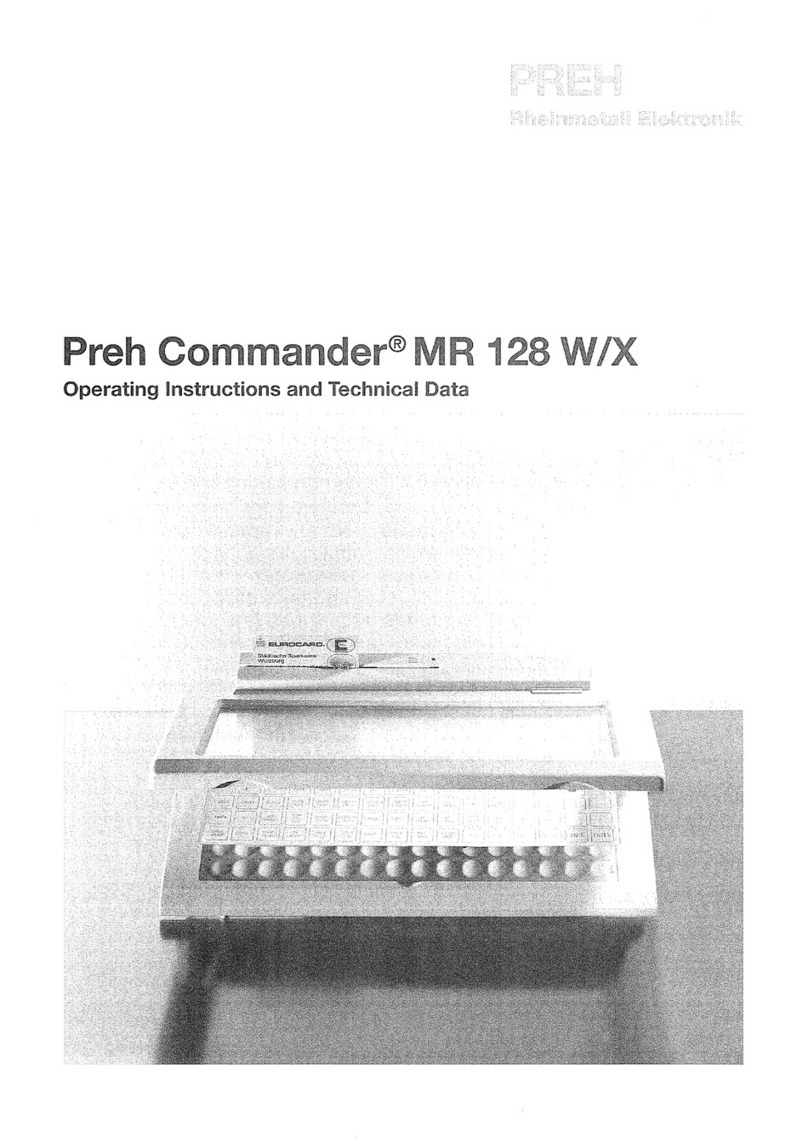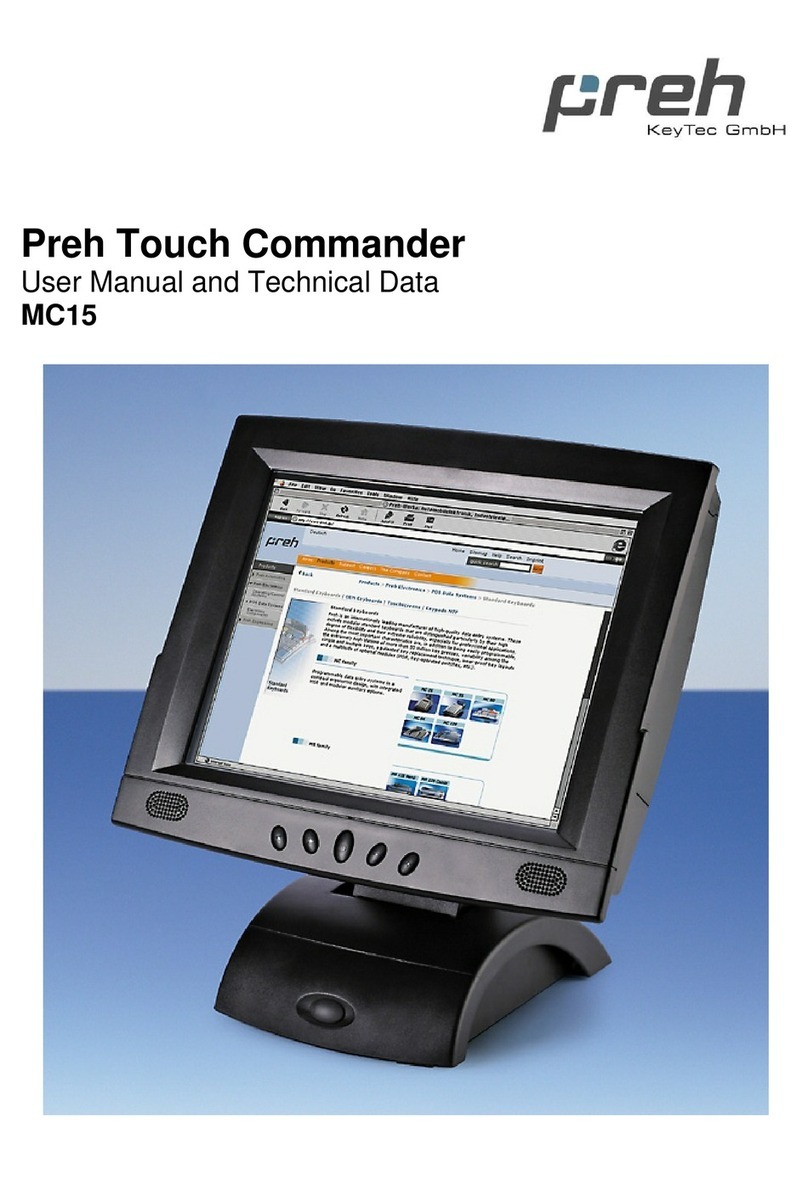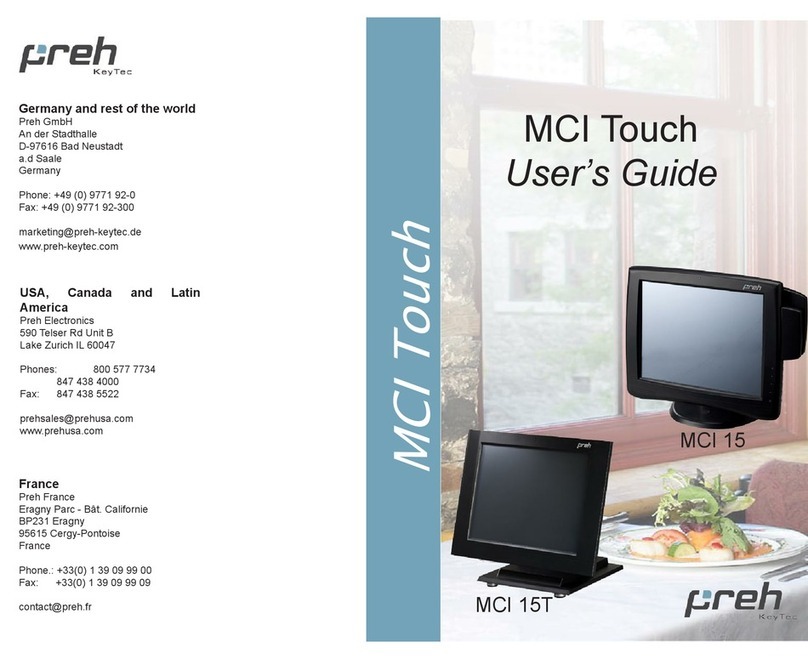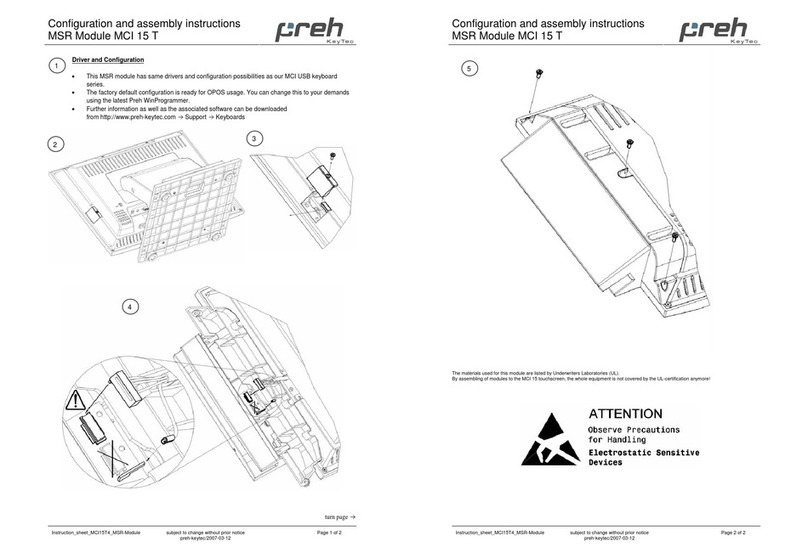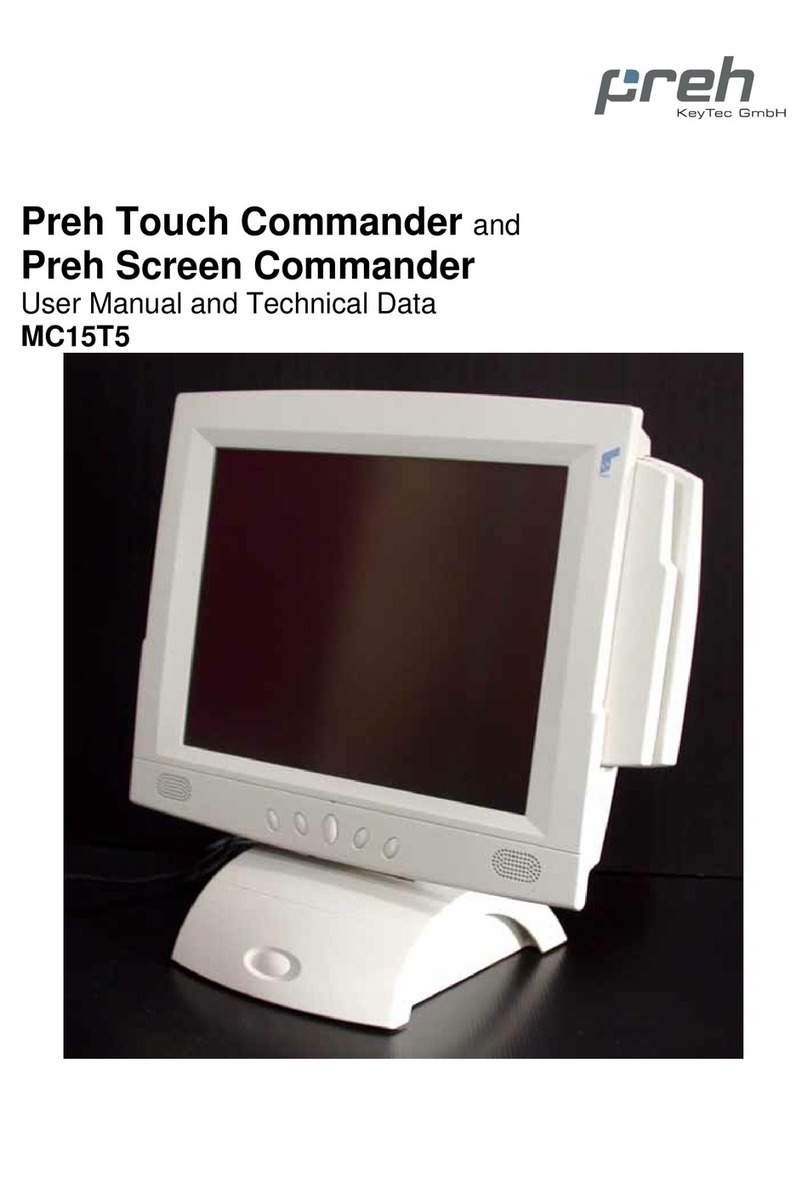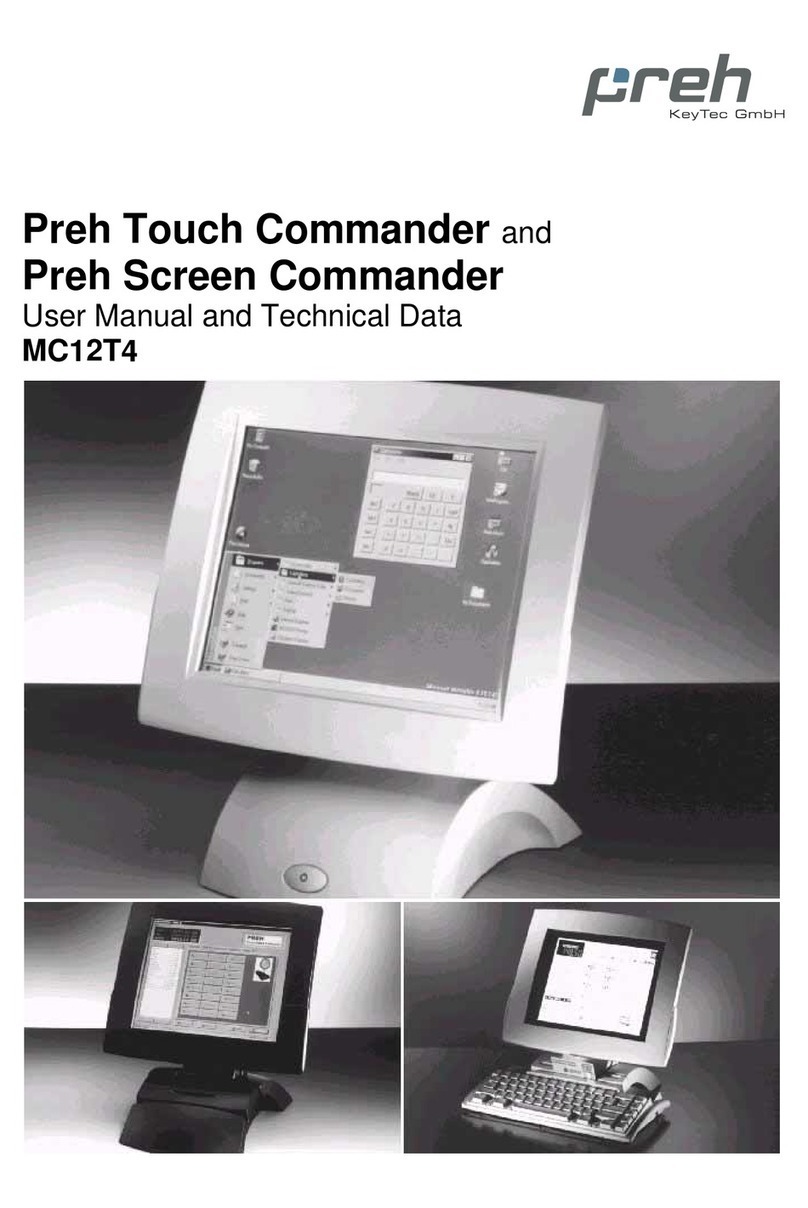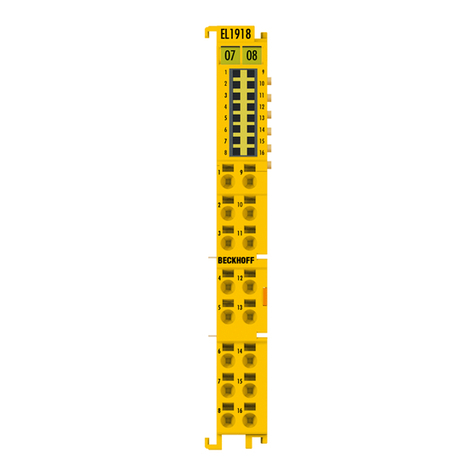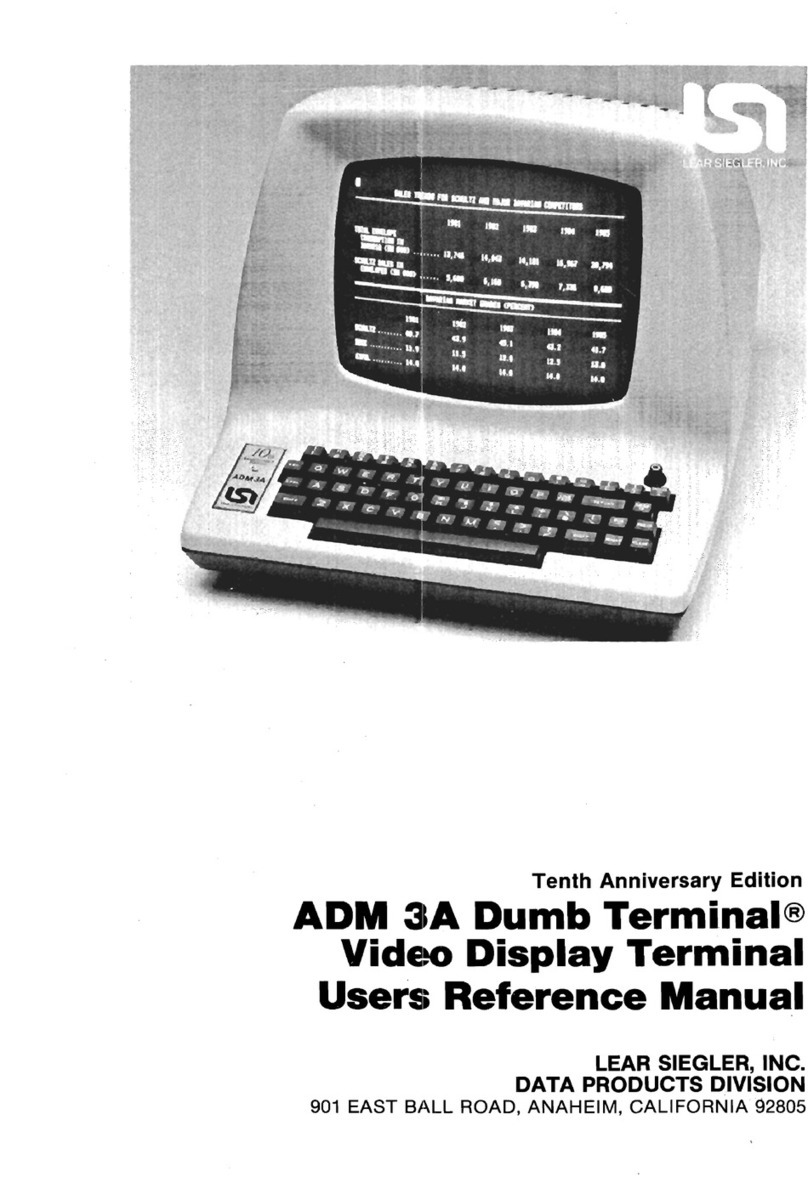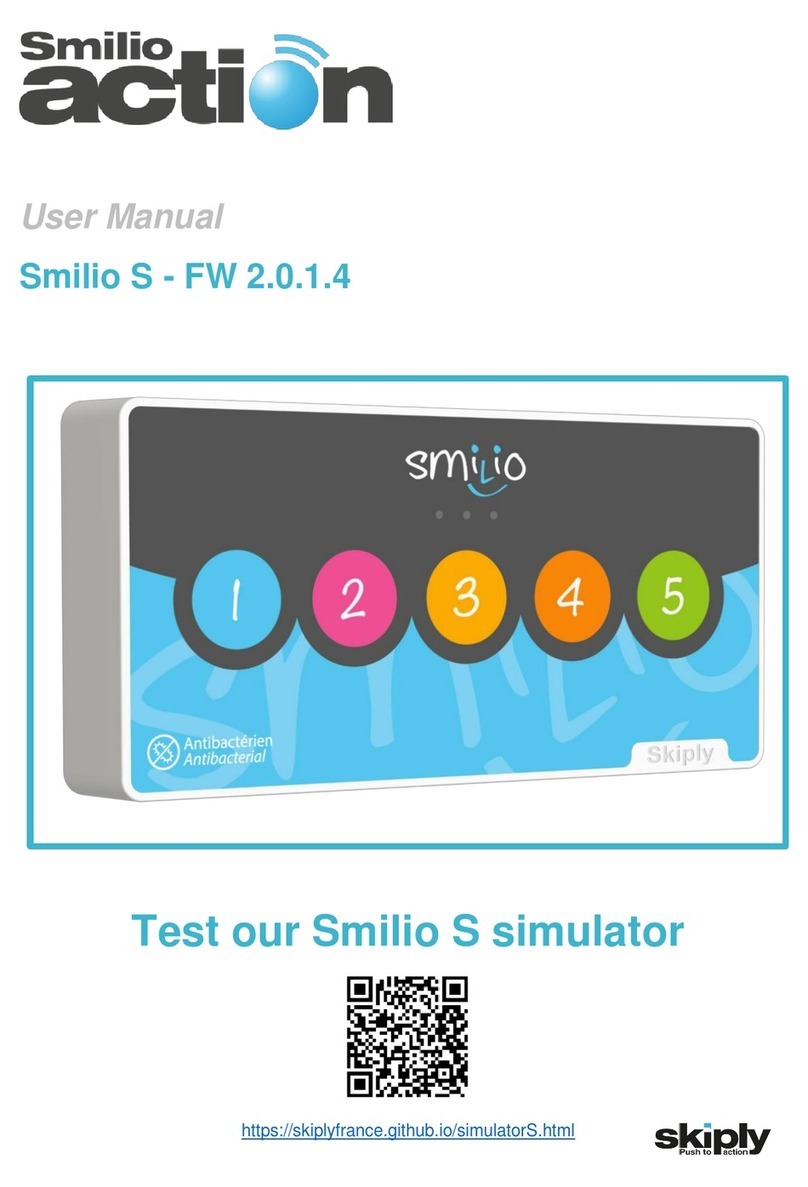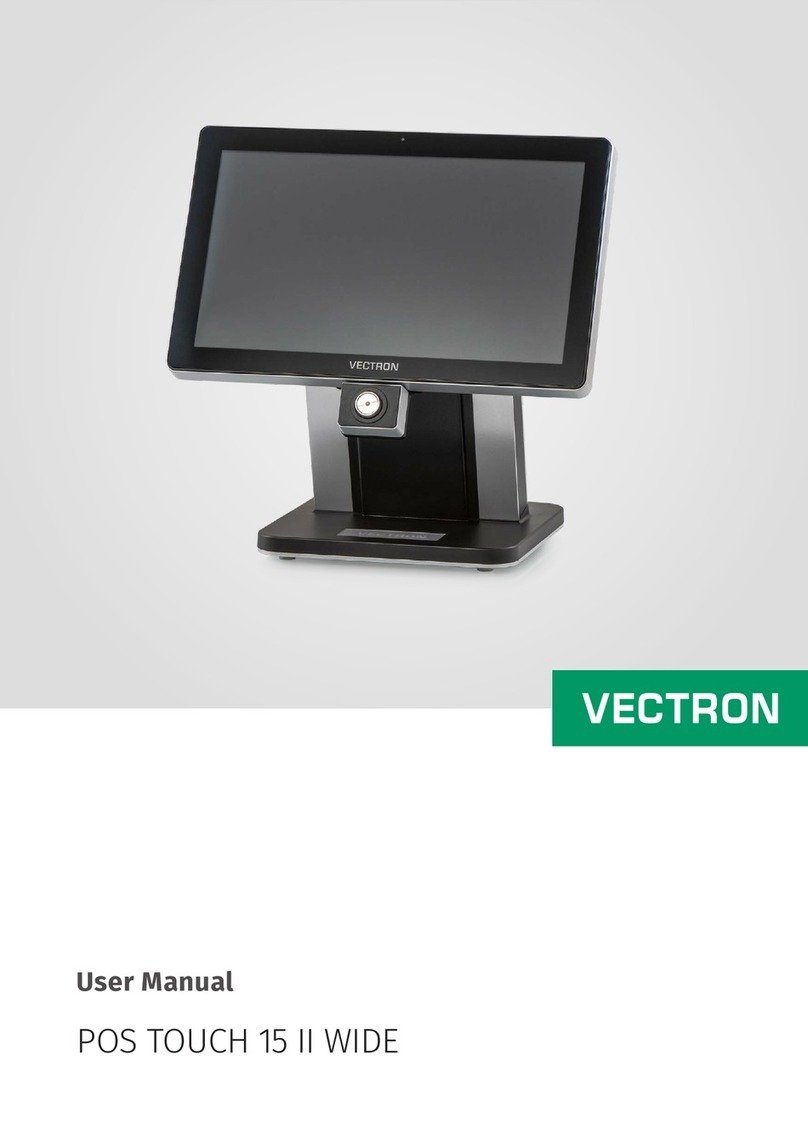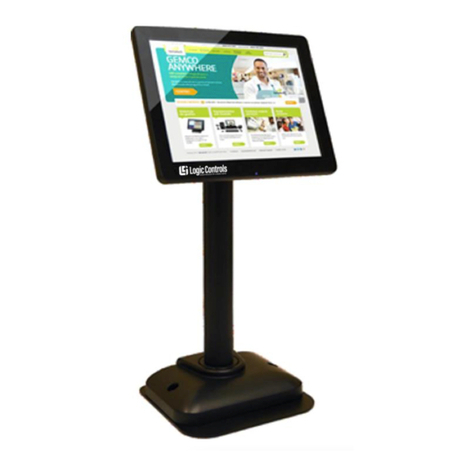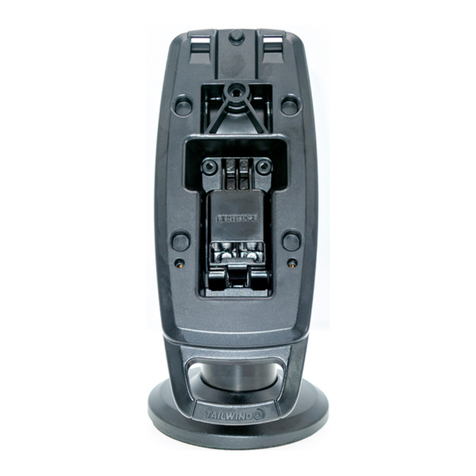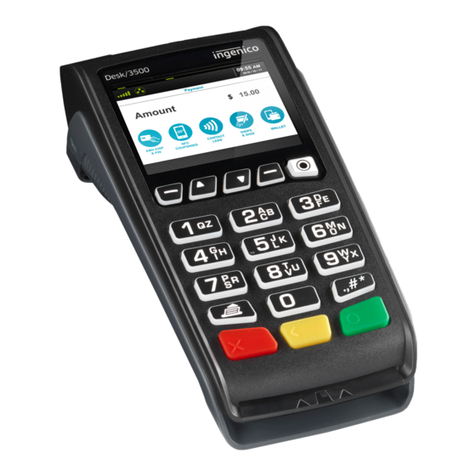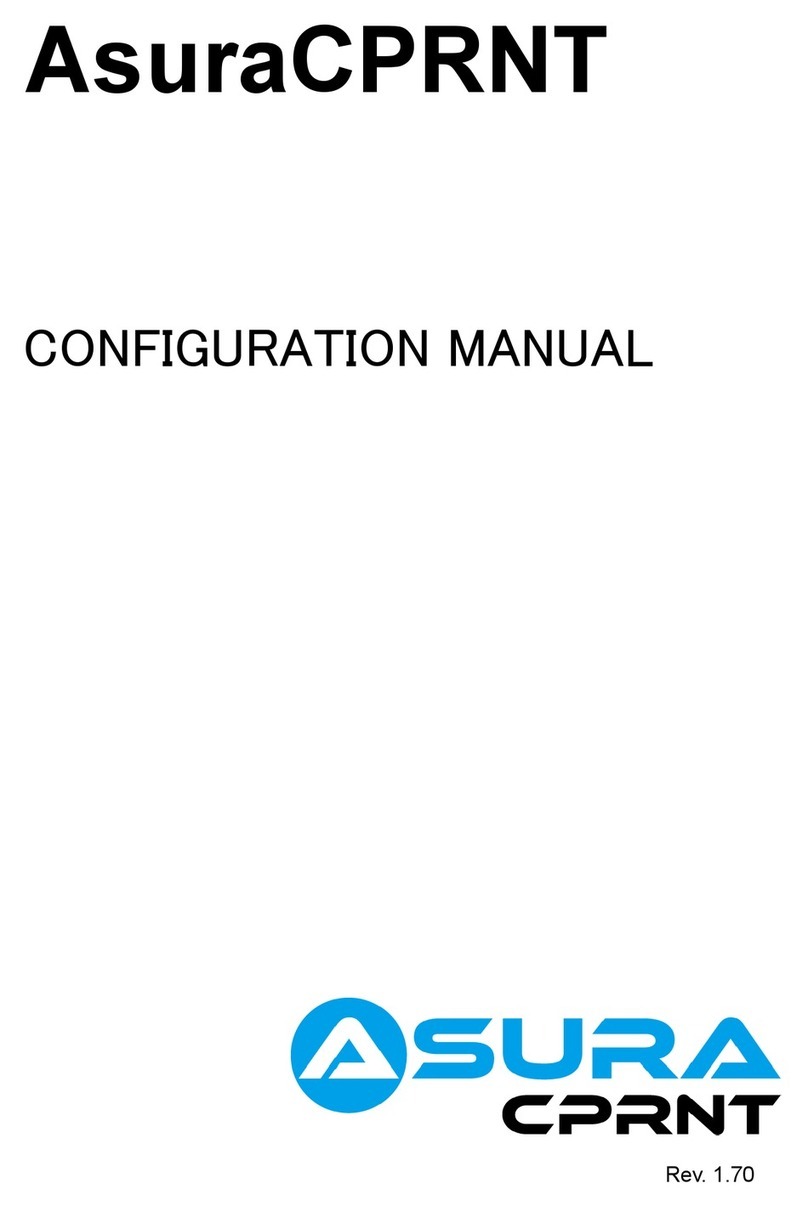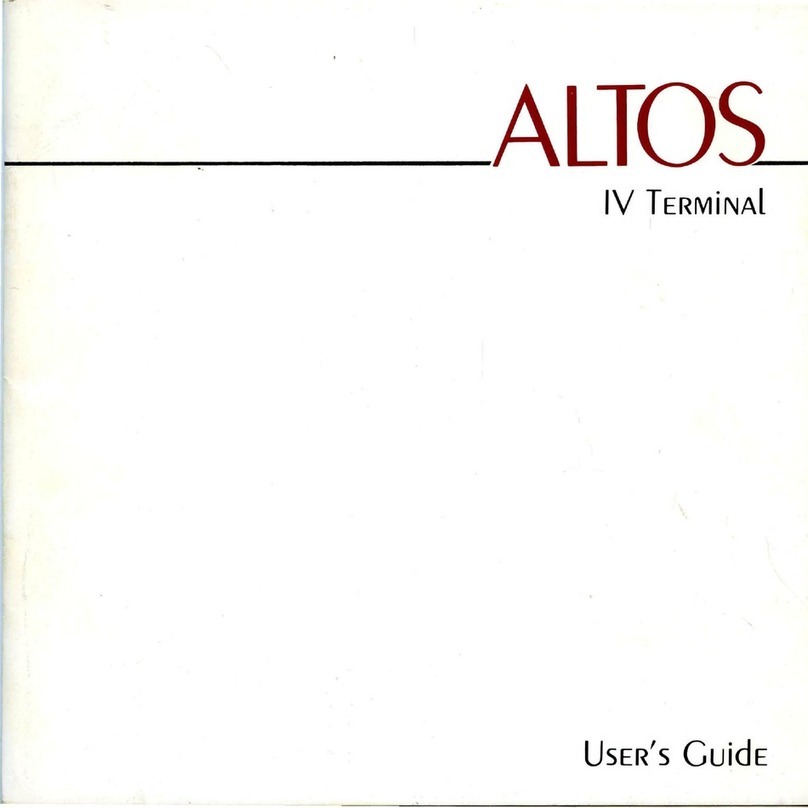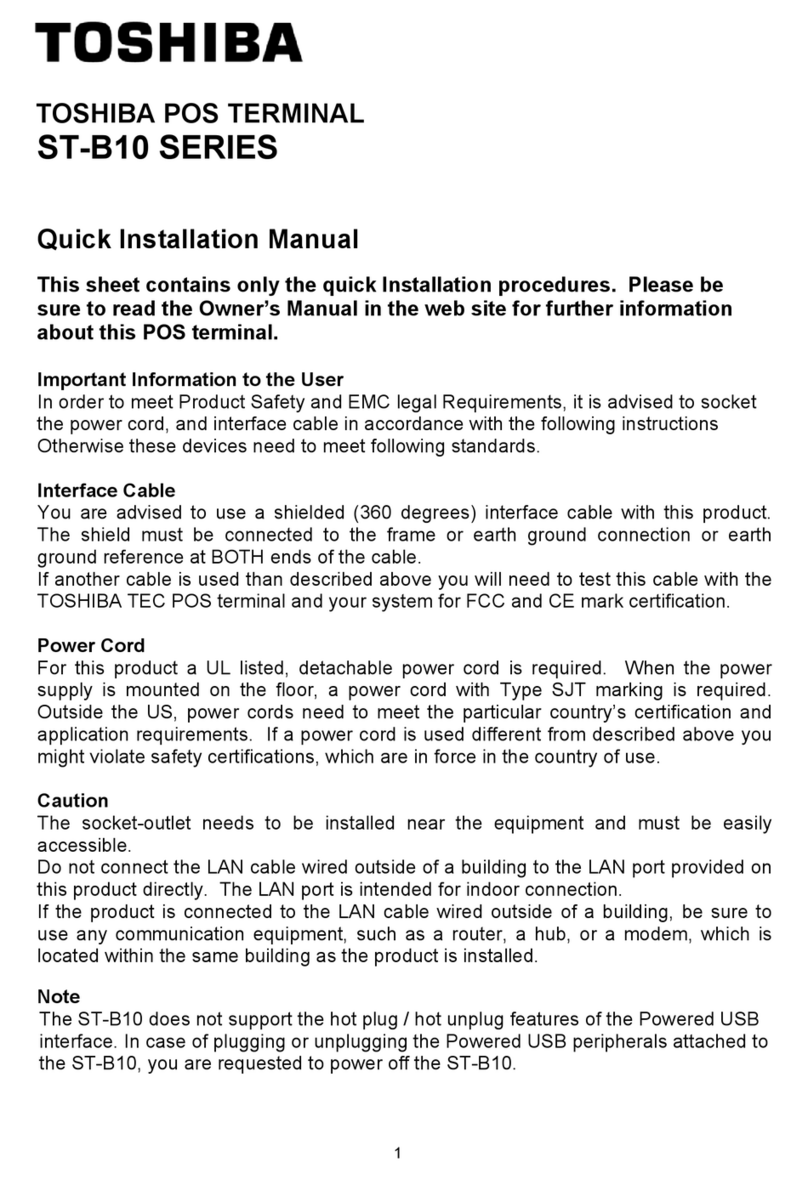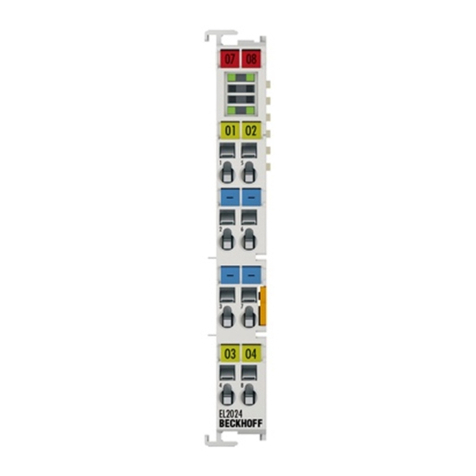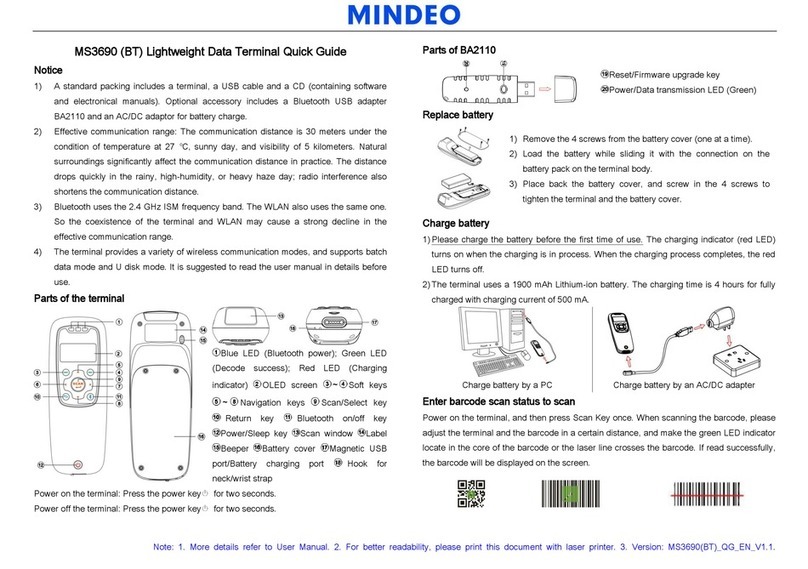Preh MC12 User manual

PREH
Operators Manual and Technical Data
Preh Touch Commander
Operators Manual and Technical Data
Preh Touch Commander
PREH ELECTRONICS, INC.
590 Telser Road, Unit B
Lake Zurich, IL 60047 USA
847-438-4000
847-438-55 (Fax)
http://preh.com (Web Address)
PREH ELECTRONICS, INC.
590 Telser Road, Unit B
Lake Zurich, IL 60047 USA
847-438-4000
847-438-55 (Fax)
http://preh.com (Web Address)
PREH ELECTRONICS, INC.
590 Telser Road, Unit B
Lake Zurich, IL 60047 USA
847-438-4000
847-438-55 (Fax)
http://preh.com (Web Address)
Preh Electronics, Inc.
590 Telser Rd. Unit B
Lake Zurich, IL. 60047
Phone 847 438-4000
Fax 847 435-5522
Optional Magnetic Stripe Reader
Keyboard Wedge (PS/2) interface
Modular Touchscreen Base

Table of Contents
Section 1. Introduction
Description 1
Section 2. Installation
Host Connections 2
Section 3. Configuration
Default Settings 4
Configuration Setup Steps 5
General Selections 6
Change to Default Settings 7
Review Settings 7
Message Formatting Selections 9
Magnetic Track Selections 10
Section 4. Data Editing
Functions 13
Fields 14
Formulas 15
Setup Commands 16
Search Command 17
Send Command 20
Section 5. Operation
Operating Procedure 24
Section 6. Troubleshooting
General Procedures 25
Keyboard Interface Problems 26
Appendix A. Default Settings
Default Settings Table 27
Appendix B. Function Codes
Function Codes Table 28
Appendix C. Non-Printable ASCII Characters
ASCII Characters Table 29
Appendix D. Magnetic Stripe Standard Data Formats
Agency Approved
Specifications for subpart B of part 15 of FCC rule for a Class A
computing device.
Limited Warranty
The manufacturer warrants this product to be in good working order
for a period of one year from the date of purchase. If this product is
not in good working order as warranted above, or should this product
fail to be in good working order at any time during the warranty
period, repair or replacement shall be provided by the manufacturer.
This warranty does not cover incidental or consequential damages
incurred by consumer misuse, or modification of said product. For
limited warranty service during the warranty period, please contact
the manufacturer to obtain an RMA number and instructions for
returning the product.
The information contained herein is provided to the user as a conve-
nience. While every effort has been made to ensure accuracy, the
manufacturer is not responsible for damages that might occur
because of errors or omissions, including any loss of profit or other
commercial damage. The specifications described herein were
current at the time of publication, but are subject to change at any
time without prior notice.
PC, PC/XT, PC/AT, PS/1, and PS/2 are trademarks of International
Business Machines.

Section 1
INTRODUCTION
Description
The MiniMag compact magnetic stripe reader can read 1, 2, or 3
tracks of magnetic stripe information. In addition, it has full data
editing capabilities.
When connected to the host computer as a keyboard wedge, the
MiniMag is completely compatible with the hosts software. The
decoded data appears to the host as if it were entered manually by
the operator through the keyboard.
This unit is fully programmable through the keyboard. The data can
be formatted with preamble/postamble and terminator characters to
match the format expected by the host.
Power, when the scanner is configured as a keyboard wedge, is
obtained from the host.
1
ISO Credit Card 30
California Drivers License 31
AAMVA Drivers License 33

configured to simulate the keyboard-entered data stream by adding
terminating characters and special preamble and/or postamble
character strings to scanned data.
3
Section 2
INSTALLATION
Host Connections
The MiniMag reader is connected between the keyboard input port
of the host computer and the keyboard itself using a Y adapter
cable.
The Y cable has a 5-pin DIN male connector on one end, and a 6-
pin mini-DIN female on the other.
The supplied adapter cable has a 5-pin DIN female connector on
one end, and a 6-pin mini-DIN male connector on the other end. The
adapter cable is used in all installations on one end of the Y cable
or the other. This converts the available cable ends for use on either
PS/2-style 6-pin mini-DIN keyboards, or AT-style 5-pin DIN key-
boards.
To connect the reader to the host, turn the power off and disconnect
the keyboard from the computer. Insert the male end of the Y
cable into the keyboard port. Then connect the keyboard to the
female end of the Y connector. This wedges the reader be-
tween the host and the keyboard.
Manually-entered data from the keyboard passes through the unit to
the host, leaving the keyboard fully functional at all times.
Magnetic data swiped into the unit is transmitted to the host
keyboard port, where it appears to the host as coming directly from
the keyboard. This makes the reader, as a data source, completely
transparent to the hosts application software. In other words, if it is
expecting data from the keyboard, that same data can be entered via
the MiniMag and make no difference to the host.
Since the host computers application software is expecting data to
be input in a particular order and format, the readers output can be
2

correct command, but before unplugging the reader, your selections
for that command will remain programmed until you change them or
reset all commands to default.
When entering keyboard commands, type no more than two charac-
ters per second. After entering each group, wait one second before
moving to the next group. All commands are case sensitive, so use
lower case for all commands. One beep indicates an accepted
command, and two beeps indicate an incorrect command. If you
make a mistake in entering a command, you must re-enter the entire
command. Do not use backspace and retype the character.
Configuration Setup Steps
1. On an AT-compatible computer, enter any edit mode. (When
running Windows, the Notepad accessory will work fine.)
2. Enter your commands as needed. Refer to the selections
available to you on the following pages. In each instance, you
will enter GROUP SETUP MODE by typing /e/d/fx, followed by
the variable syntax. (The x will be different every time, de-
pending on the group setting you wish to make.)
3. Enter a SPACE <space>.
4. Enter the code for the selection you have made.
5. When finished, exit the groups setup mode by entering <EN-
TER> (the ENTER key).
EXAMPLE:
To set the beep volume to HIGH, enter:
/e/d/fa<space>b2<ENTER>
5
Section 3
CONFIGURATION
The MiniMag reader must be appropriately configured to your
application. Configuration settings enable the reader to work with the
host system. These settings are programmed into the reader through
the keyboard. Once programmed, these configuration settings are
stored in the readers non-volatile memory (so they are not affected
by the cycling of power).
Default Settings
The MiniMag reader is shipped from the factory with the default
settings already programmed. In the following sections, the default
settings are shown in boldface. For a table of default settings, see
Appendix A. In order to modify these settings, the host computer
and keyboard must be IBM PC/AT compatible.
If you have a different keyboard, you must use an AT-compatible
keyboard to first change the configuration settings, and changing the
default terminal type last. After changing terminal type, you must
then connect the reader to the appropriate computer. (Most key-
boards on PCs with 5 pin DIN and 6 pin MiniDIN connectors are
AT compatible.)
To enter the setup mode and change the configuration via keystroke
entry, specific syntax is used. Each setup command starts with /e/d/
fx where x is a different lower case character for each command.
The e,d,and f characters must also be lower case. This initial char-
acter string is followed by a space and some option selection charac-
ters for some commands. Selections for each group take effect
when you press enter.
If you unplug the MiniMagwhile you are in the middle of a command
and have not pressed enter, your custom configuration for that
command will not be saved. If, however, you press ENTER after a
4

b3=2 for 10 ms intercharacter delay
b3=3 for 20 ms intercharacter delay
b3=4 for 50 ms intercharacter delay
b3=5 for 100 ms intercharacter delay
EXAMPLE
To set the terminal type to PC-AT, the beep to high, and the
intercharacter delay to 5 milliseconds, enter:
/e/d/fa<space>021<ENTER>
Note: Two beeps will be heard if entered numbers are outside
the allowable range.
Change To Default Settings
This command, /e/d/fn, returns all settings for all groups to their
default values. Data Editing will be turned off, and the formulas
will be retained.
Syntax: /e/d/fn<ENTER>
Review Settings
This command, /e/d/fo, activates the review settings command. This
will send the resident settings for the general group to the host
computer, allowing you to review them. The firmware version
number is also shown.
Syntax: /e/d/fo<ENTER>
7
General Selections
This group of configuration settings define the basic operating
parameters of the scanner.
Syntax: /e/d/fa<space>b1b2b3<ENTER> where...
Terminal Type Selections
The MiniMag can be programmed to interface to a number of
different terminal types. The terminal types supported are:
b1=0 for PC-AT
b1=1 for PS/2 Models 25 and 30
b1=2 for PS/2 Model 50
b1=3 for PS/2 Model 70
b1=4 for Macintosh
Beep Volume
The beep volume can be adjusted to two different levels, or turned
off entirely.
b2=0 for beep volume off
b2=1 for beep volume low
b2=2 for beep volume high
Intercharacter Delay
This is the time period the reader will wait before sending the next
successive character. Certain terminals and computers require an
intercharacter delay to simulate their keyboards intercharacter
delay.
b3=0 for 2 ms intercharacter delay
6

Message Formatting Selections
Terminator Setting
Terminator characters are used to end a string of data in some
applications.
Syntax: /e/d/fb<space>b1<ENTER>where...
b1 = 0 for Enter
b1 = 1 for Enter
b1 = 2 for Enter
b1 = 3 for none
Preamble Setting
Characters can be added to the beginning of a string of data. These
can be special characters for identifying a specific reading station, to
format a message header expected by the receiving host, or any
other character string. Up to nine ASCII characters can be defined.
Syntax: /e/d/fc<space>string<ENTER>(length is 0 to 9)
Postamble Selection
The postamble serves the same purpose as the preamble, except it is
added to the end of a string of data (after any terminator charac-
ters).
Syntax: /e/d/fd<space>string<ENTER>(length is 0 to 9)
Note: /e/d/fc or /e/d/fd without parameters will go back to default: no
preamble and postamble.
9
Reading and Decoding Settings
This command will turn the MiniMag on or off, and set the
decoding directions. If the reader is disabled, no data will be sent
to the host.
Syntax: /e/d/fu<space>b1b2<ENTER> where...
MSR Reading Settings
b1=0 MSR Reading Disabled
b1=1 MSR Reading Enabled
Decoding Method Settings
The MiniMag can support three kinds of decoding directions.
With the bi-directional method, the user can swipe the card in
either direction and still read the data on the magnetic stripe.
Otherwise, the card can only be swiped in one direction to read
the card.
b2=1 Decoding in both directions
b2=2 Moving stripe along head in direction of encoding
b2=3 Moving stripe along head against direction of encoding
8

Example: To set the Track Separator to TAB, enter /e/d/
fq<space>\tab<ENTER> (13 keystrokes).
Start/End Sentinel and Track 2 Account Number Only
The MiniMag can be set to either send or not send, to invoke the
Start/End sentinel, and to send either the Track 2 account num-
ber only, or all the encoded data on Track 2. (The Track 2
account number setting doesnt affect the output of Track 1 and
Track 3.)
Syntax: /e/d/fv<space>b1<ENTER> where...
b1=0 Not send start/end sentinel and send all data on Track 2
b1=1 Send start/end sentinel and send all data on Track 2
b1=2 Not send start/end sentinel and send account number on
Track 2
b1=3 Send start/end sentinel and send account number on
Track 2
11
Magnetic Track Selections
Track Selection
There are up to three tracks of encoded data on a magnetic stripe.
This option selects the tracks that will be read and decoded. Note
that the MiniMag reader must have heads aligned for reading the
specified tracks. If a single or dual-track reader is being used, the
heads must be positioned to read the tracks selected by this option.
Syntax: /e/d/fp<space>b1<ENTER>where...
b1=0 for Any Tracks
b1=1 for Track 1 only
b1=2 for Track 2 only
b1=3 for Tracks 1 and 2
b1=4 for Track 3 only
b1=5 for Track 1 and Track 3
b1=6 for Tracks 2 and 3
b1=7 for Tracks 1, 2, and 3
Track Separator Selection
This option allows the user to select the character to be used to
separate data decoded by a multiple-track reader.
Syntax: /e/d/fq<space>b1<ENTER>where...
b1= the new track separator character can be selected from the
keyboard for printable characters, or from Appendix B: Function
Code Table (1 function code only).
/e/d/fq<ENTER> will return the separator character to its default
value <ENTER>. /e/d/fq<space>\nul will turn off the separator
character.
10

Functions
The following editing functions can be performed:
Rearrange the Data: The fields within a track, created by established
standards, can be transmitted to the host in any order desired,
regardless of the order in which they occurred in the card track.
Insert Character Strings into the Output Data Record: Character
strings can be defined and inserted at any place in the data output
record.
Duplicate Fields: Fields within a track can be transmitted to the host
as many times as desired, and in any order.
Select Output Fields: Fields within a track can be selected for output
or not selected for output.
13
Section 4
DATA EDITING
The MiniMag has a data editing feature incorporated into its firm-
ware. This feature allows the data read from the magnetic stripe to
be sent to the host in the exact format expected by the host soft-
ware, eliminating the need for modifications to the application
software.
The data (that is, the input record from the magnetic stripe) can be
divided up into a number of separate fields, according to established
standards (such as ISO, ANSI, AAMVA, and CDL). The data in
each of these fields can then be edited, and new fields can be
defined using the Data Edit commands.
The edited data fields are then transmitted to the host in any order
desired, regardless of their position on the original magnetic stripe.
12

Formulas
The set of instructions programmed into the MiniMag to edit data
is referred to as the data editing formula. More than one
formula (to a maximum of four) can be resident in the reader at
one time. If more than one formula resides in memory, the
reader will apply the first formula to the input data. If the
scanned data matches the format (credit card, drivers license,
etc.) of the first formula, then it will apply the data editing
functions and output the reformatted data to the host.
If the data does not match the criteria spelled out in the first
formula, then the criteria of the second formula is applied. This
process continues for each of the successive formulas until a
match is found. If no matches are found to any of the formulas
programmed into the reader, then either nothing will be transmit-
ted to the host, or the unedited data record will be transmitted,
according to the data editing matched flag, whether set or not.
The MiniMag supports four kinds of formulas: credit card, California
drivers license, and AAMVA formats, as well as a customized
format. The user can define all four, or only one at a time. However,
the MiniMag can only keep one credit card, one California drivers
license, one AAMVA, and one customized format at a time.
15
Fields
By separating the input data record into smaller blocks (called
fields), each block can be edited individually. Additional fields can
also be added to the record, allowing specific functions, such as
carriage returns or keyboard function keys, to be inserted at any
point. (The field standards for ISO Credit Cards, California drivers
licenses, and AAMVA drivers licenses are listed in Appendix D.)
By separating the input data record into smaller blocks (fields), each
block can then be treated individually. Additional fields can also be
added to the record in any position, allowing specific functions, such
as carriage returns. Fields are identified by a one-character ID
starting with the character a, up to and including z, in the order
they were created, allowing as many as 26 fields to be defined.
These fields are then sent to the host in the order which the user
specifies. For example, if the input data record is in the Credit Card
Format for Track 2:
;1234567890123456=9912xxxxxxx?c
Field ID |a| b |c| d | e |f|g|
and your application software is looking for the data to be in the
following format:
9912<ENTER>
1234567890123456<ENTER>
then we must divide the data record into fields, select only those
fields desired, reverse the order in which they are sent to the host,
and create a new field <ENTER> and insert it after each field.
We do this by using the defined fields and adding a new field:
Field b = 1234567890123456
Field d = 9912
Field h = <ENTER>
and sending {Field d} {Field h} {Field b} {Field h}
14

where:
Added field 1 = Idt
Added field 2 = ;
Added field 3 = \cr (carriage return)
Added field 4 = \f1(function key F1)
Added field 5 = \htITS(tab + ITS)
Data Editing Search Command
In working with a user-defined format that is not credit card, CA
DMV, orAAMVA, the MiniMag will support any combination of the
following five search methods:
Length Match: For a particular track, indicate the minimum and
maximum number of characters acceptable for the data editing
formula.
String Match: For a particular track, indicate a specific string of
characters, as well as the character position at which that string
must begin, in order to be acceptable to the data editing formula.
Search Before: For a particular track, the MiniMag will create a
data field which contains all characters that come before the speci-
fied occurrence of a given character sequence. (For example, the
second occurrence of the character sequence ABC.)
Search Between: For a particular track, the MiniMag will create a
data field which contains all characters that come between the
specified occurrence of one sequence of characters and another.
Search After: For a particular track, the MiniMag will create a data
field that contains the specified number of characters that come
after the specified occurrence of a given character sequence. (An
offset of a given number of character positions can also be indi-
cated.)
17
Data Editing Setup Commands
The following commands are used to set the operating parameters of
the data editing feature.
Data Editing On/Off, Matched/Unmatched
Syntax: /e/d/fe<space> b1b2 <ENTER>
where:
b1 = 1 Data Editing On
b1 = 0 Data Editing Off
b2 = 1 if no formula matches card data, send out whole card data
b2 = 0 if no formula matches card data, do not send anything
Data Editing Added Field
An output field is created containing the character string. Up to
six fields can be defined. The maximum characters of each field
is six.
Syntax: /e/d/fr<space>f1<space>f2<space>f3<space>f4<space>
f5<space>f6<ENTER>
where:
Maximum of Added field is six;
Maximum characters of each field is six;
Separator between each field in command is space;
Example: /e/d/fr<space>Idt<space>;<space>\cr<space>
\f1<space>\htITS<ENTER>
16

Example:
/e/d/fs c1a0101? d2b0101=0201=
where generating two flexible fields:
First Flexible Field:
c: Search before method
1a: The first flexible field is in Track1
01: once search;
01: the length of searched string
?: searched string
Second Flexible Field:
d: Search between method
2b: The second flexible field is in Track2
01: once search
01: the length of first searched string
=: the first searched string
01: once search
01: the length of second searched string
=: the second searched string
19
Syntax: /e/d/fs<space>[length_match] [string_match]
[search_before] [search_between][search_after]<ENTER>
where:
length_match: = a{track_no}(minimum characters)(maximum
characters)
string_match: = b{Track_no}(offset)(length)(string)
search_before: = c{track_no}{field_no}(times) (length)(string)
search_between: = d{Track_no}(field_no)(times1)
(length1)(string1)(times2)(length2)(string2)
search_after: = e{Track_no}(field_no)(times) (offset)(length2)
(length1)(string1)
track_no: = 1 | 2 | 3
field_no: = a...z
Times, Times1, andTimes2: Times and Times1 define how many
times a specified string is searched from the start of data on a
specific track. Times2 defines how many times a specified string is
searched from the rest of the data on a specific track after the first
string has been searched.
Offset: The offset of String Match is from the start of data for a
particular track. The offset of String After is from the start of the
rest of the string, after the specified string, after the specified
number of times.
18

1b: Track1 format field (No. is 2)
0c:Added Field 3
1c: Track1 Account Number (No. is 3)
0c:Added Field 3
2d: Track2 Expiration Date (No. is 4)
0b:Added Field 2
0c:Added Field 3
If the added fields are line feed, ; , carriage return, IDT, ITS,
respectively, data will be output as:
< ITS><B>
<Account No.>
<Expiration Date><;>
DMV formula is:
7b1c0c1e0c1f0c3d3e0c2f0c
7b: DMV Format
1c: Track1 Name Field (No. is 3)
0c:Added Field 3
1e: Track1 Address Field (No. is 5)
0c:Added Field 3
1f: Track1 City Field (No. is 6)
0c:Added Field 3
3d: Track3 State Field (No. is 4)
3e: Track3 Zip Code Field (No. is 5)
0c:Added Field 3
2f: Track2 Birthday Field (No. is 6)
0c:Added Field 3
Data will be output as:
<Card Holder Name>
<Address>
<City>
<State><Zip Code>
<Birthday>
21
Data Editing Send Command
Send out the field according to the customer-defined order.
Syntax: /e/d/ft [ccsmd] [dmvsmd] [aamvasmd] [flexsmd]
where:
ccsmd: = 7a{field}[{field}](credit card)
dmvsmd: = 7b{field}[{field}](CAdrivers license)
aamva: = 7c{field}[{field}](AAMVA)
flexsmd: = 7d{field}[{field}](custom format)
field: = {add_fd_tag}{field_no} | {track_no}{field_no}
add_fd_tag: = 0
track_no: = 1 | 2 | 3
field_no: = a...z
Example: /e/d/ft <space>7a0e1b0c1c0c2d0b0c<space>
7b1c0c1e0c1f0c3d3e0c2f0c<space>7d1a0c2b0c
<ENTER>
where generating three formulasone for Credit Card, one for
DMV, and one custom format.
Credit Card formula is:
7a0e1b0c1c0c2d0b0c
7a: Credit Card
0e:Added Field 5
20

Notes
23
Flexible formula is:
7d1a0c2b0c
7d: Flexible format
1a: Track1 data before end sentinel
0c:Added Field 3
2b: Track2 data between the first equal sign and the second equal sign
0c:Added Field 3
Data will be output as:
< Track1 data before end sentinel >
< Track2 data between the first equal sign and the second equal sign >
22

Section 6
TROUBLESHOOTING
The MiniMag reader is easy to install and use. Most problems
encountered can be attributed to:
•Incorrect Interface Cabling
•Incorrect Configuration Setup
•Bad Magnetic Stripe Quality
General Procedures
The troubleshooting process can be simplified by following these
simple diagnostic procedures.
1. The unit should emit one long beep when power is first applied. If
it does not, then the unit is not receiving power.
2. Once it has been confirmed that the unit is correctly powered, try
swiping a credit card. The LED will go off while decoding, then light
green to indicate a good read, or red to indicate a bad read.
3. Once the unit has indicated a good read, then proceed to check
the interface cabling connections.
25
Section 5
OPERATION
The MiniMag reader is easy to operate. Just follow these simple
steps:
1. Make sure the reader is properly cabled and is receiving sufficient
power. (See Section 5, Troubleshooting, if there is a cabling or power
problem.)
2. To read a card, slide the card, in either direction, through the
reader slot, with the magnetic stripe facing the magnetic head (LED
side).
3. While swiping the card through the reader, the LED will go off.
4. Once the entire magnetic stripe has been read, the LED indicator
will light up as green to signal a good read. If a good read is not
obtained, the LED indicator will light up as red.
5. A beep will also sound to indicate a good read on each track. If all
three tracks have been read successfully, the reader will beep three
times.
24

Appendix A. Default Settings Table
The MiniMag reader is shipped from the factory with the following
default settings already programmed:
Magnetic Track Basic Data Format
Track 1: <SS1><T1Data><ES><ENTER>*
Track 2: <SS2><T2 Data><ES><ENTER>*
Track 3: <SS3><T3 Data><ES><Enter>*
where: SS1(start sentinel track 1) = %
SS2(start sentinel track 2) = ;
SS3(start sentinel track 3) = ; for ISO, ! for CDL,
% for AAMVA
ES(end sentinel all tracks) = ?
Keyboard Wedge Communication Default Settings
Terminal type: IBM PC/AT
Intercharacter delay: 5 ms
Language: US English
Start or End Sentinel: Characters in encoding format which come
before the first data character (start) and after the last data charac-
ter (end), indicating the beginning and end, respectively, of data.
Track Separator: A designated character which separates data
tracks.
Terminator: A designated character which comes at the end of the
last track of data, to separate card reads.
LRC: Check character, following end sentinel.
CDL: Old California Drivers License format.
*Note: The <ENTER> commands shown above for tracks 1 & 2
and 2 & 3 denote the default character for this position, the
Track Separator position. The <Enter> command shown for
track 3 denotes the default character for this position, the
Terminator position.
27
Keyboard Interface Problems
Installation of the reader is generally trouble free, but there are some
things to watch for if you are experiencing problems.
Do you have the proper cable?
Most modern computers and terminals use a PC/XT/AT-compatible
keyboard. However, the cable connecting it to the keyboard port
may have variations in either the signal pins or the connector itself.
Make sure that you have the proper cable for the computer/terminal
with which you are interfacing.
Does the keyboard work?
Since the data from the keyboard must pass through the reader, the
cabling connections are correct if the keyboard is operational.
Can the host computer accept the data fast enough?
Some computers and terminals are expecting the data rate from the
keyboard port to come in at a keystroke rate, and might not be able
to accept it as fast as the reader is transmitting. Try adjusting the
intercharacter delay to simulate the effects of keystroke delays.
26

Appendix C: Non-printable ASCII Characters
Character Keystroke
NULL \nul
SOH \soh
STX \stx
ETX \etx
EOT \eot
ENQ \enq
ACK \ack
BEL \bel
BS \bs
HT \ht
LF \lf
VT \vt
FF \ff
CR \cr
SO \so
SI \si
DLE \dle
DC1 \dc1
DC2 \dc2
DC3 \dc3
DC4 \dc4
NAK \nak
SYN \syn
ETB \etb
CAN \can
EM \em
SUB \sub
ESC \esc
FS \fs
GS \gs
RS \rs
US \us
29
Appendix B. Function Code Table
Character Keystroke Character Keystroke
F1 \f1 End \end
F2 \f2 Right \right
F3 \f3 Left \left
F4 \f4 Up \up
F5 \f5 Down \down
F6 \f6 PgUp \pgup
F7 \f7 PgDn \pgdn
F8 \f8 Tab \tab
F9 \f9 Back Tab \btab
F10 \f10 Esc \esc
F11 \f11 Enter \enter
F12 \f12 CR \cr
Ins \ins LF \lf
Home \home Backspace \bs
To input the \ character, type it twice. For example, typing ab\\cd in a
preamble string will result in ab\cd as the preamble.
28

California Drivers License Format
Track 1
a Start Sentinel 1
b Format Code Type 1
C = Commercial, S = Salesperson, D = Driver
I = Identification, R = Senior Citizen
c Name Line 1 29
d Name Line 2 29
e Address Line 1 29
f City 13
g End Sentinel 1
h Linear Redundancy Check (LRC) Character 1
Track 2
a Start Sentinel 1
b Identification Number
ANSI User ID 6
DL/ID Alpha Translated2
7 position DL/ID number 7
Check Digit 1
c Field Separator = 1
d Expiration Date 4
e Field Separator = 1
f Discretionary Data,
8 position birthdate 8
g End Sentinel 1
h Linear Redundancy Check (LRC) Character 1
31
Appendix D: Magnetic Stripe Standard Data
Formats
International Standards Organization (ISO) Credit Card Format
Track 1
Field ID Contents Length
Character
a Start Sentinel 1
b Format Code B 1
c Account Number 13 or 16
d Separator ^ 1
e Cardholder Name variable
f Separator ^ 1
g Expiration date 4
h Optional Discretionary data variable
i End Sentinel 1
j Linear Redundancy Check (LRC) Character 1
Track 2
a Start Sentinel 1
b Account Number 13 or 16
c Separator = 1
d Expiration date YYMM 4
e Optional discretionary data variable
f End Sentinel 1
g Linear Redundancy Check (LRC) Character 1
30

AAMVA Drivers License Format
Track 1
a Start Sentinel 1
b State or Province 2
c City 13
d Name 35
e Address 29
f End Sentinel 1
g Linear Redundancy Check (LRC) Character 1
Track 2
a Start Sentinel 1
b ANSI User Code 1
c ANSI User ID 5
d Jurisdiction ID/DL 14
e Expiration date 4
f Birthdate 8
g Remainder of Jurisdiction ID/DL 5
h End Sentinel 1
i Linear Redundancy Check (LRC) Character 1
33
Track 3
a Start Sentinel 1
b Class 4
c Endorsements 4
d State Code 2
e Zip Code 9
f Sex 1
g Hair 3
h Eyes 3
i Height 3
j Weight 3
k Restrictions 10
l Issue Date 8
m Office 3
n Employee ID 2
o LRE ID 2
p Fee Due Year 4
q Address Line 2 29
r Reserved Space 10
s End Sentinel 1
t Linear Redundancy Check (LRC) Character 1
32

80030501-001 R2/00 #414
34
NOTES
Other manuals for MC12
1
Other Preh Touch Terminal manuals
